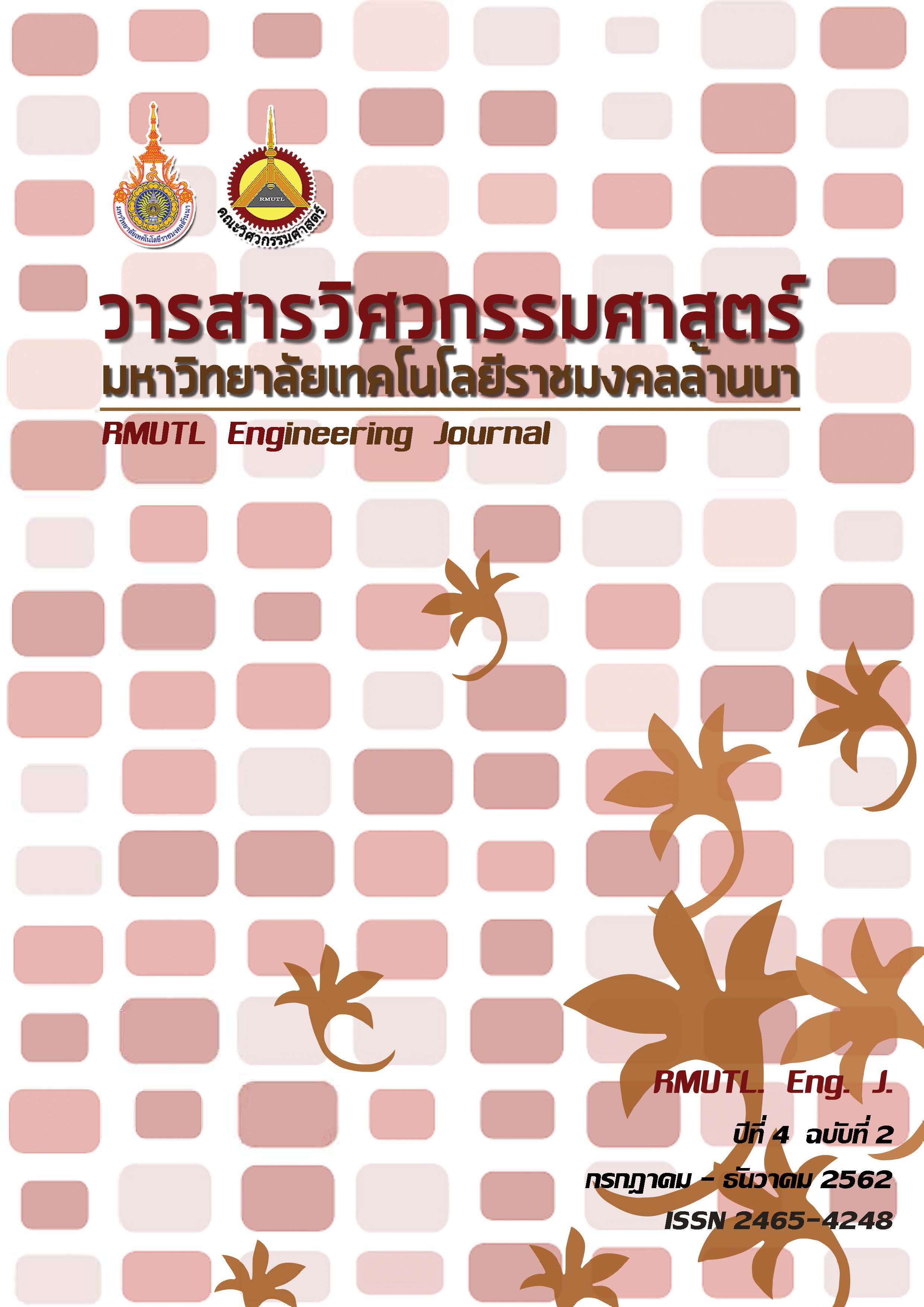Design and Implementation of Ultrasonic Inverter for Use with Drilling Machine
Keywords:
drilling machine, power MOSFET, small and medium enterprises: SMEs, ultrasonic inverterAbstract
This article presents the design and implementation of ultrasonic inverter for use with a drilling machine, in order to compare the material penetration efficiency between non-ultrasonic and ultrasonic penetration. In the design and construction of an ultrasonic inverter, the 500 V 20 A power MOSFET was used in conjunction with bridge rectifier and switching transformer. The proposed ultrasonic inverter could drive a 25 kHz, 40 kHz, 60 kHz, 100 kHz and 120 kHz ultrasonic wave with electric power up to 1.1 kW. It was assembled into a drilling machine and tested the penetration with 4 sample materials, 1 mm. steel sheet, 1.5 mm. stainless sheet, 1 mm. aluminum sheet and 2 mm. acrylic sheet. The results showed that ultrasonic penetration was faster than non-ultrasonic penetration in all types of sample materials. The time spent in drilling from ascending order was 25 kHz, 40 kHz, 60 kHz, 100 kHz, 120 kHz, and without ultrasonic, respectively
References
2. David J, Cheeke N. Fundamentals and applications of ultrasonic waves. Florida: CRC Press LLC; 2002
3. Chang SS. Ultrasonic assisted drilling. M.Sci. Thesis. McMaster University; 2003
4. Horne MF. Drilling on mars – mathematical model for rotary-ultrasonic core drilling of brittle materials. Ph.D. Thesis. University of California, Berkeley; 2015
5. Chowdhury MAK, Sharif Ullah AMM, Anwar S. Rotary ultrasonic machining and uncertainties underlying cutting force, tool wear and production materials. 2017;10(1069) Available from: doi:10.3390/ ma10091069 [Accessed 22nd September 2019]
6. Gray PR, Hurst PJ, Lewis SH, Meyer RG. Analysis and design of analog integrated circuits 5th Edition. New York: John Wiley & Sons; 2009
7. Power MOSFET IRFP460. Available from: http://www.vishay.com/docs/91237/91237.pdf [Accessed 22nd September 2019]
8. RBV2506D.[internet]. Available from: https:// www.es.co.th/Schemetic/PDF/RBV25XX-EIC.PDF [Accessed 22nd September 2019]
9. Cheng DK. Field and wave electromagnetics 2nd Edition. Massachusetts: Addison-Wesley Publishing; 1989
10. Electronics Source. .[internet]. Available from: https://www.es.co.th/ [Accessed 22nd September 2019]










